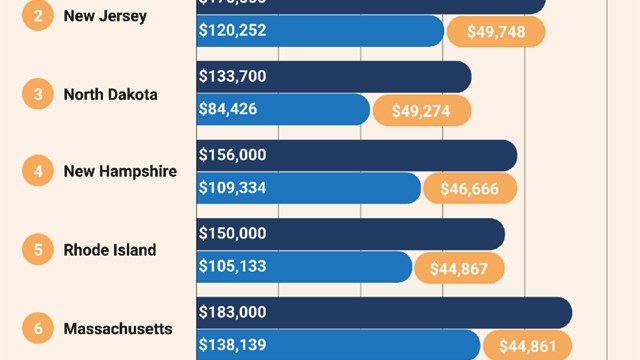Time was, a nice spacious condo unit with a good location, a decent view and several basic amenities like a laundry room, a doorman and a gym or pool were what New York City buyers wanted when they went home-shopping. However, as more buildings were constructed or renovated, and as competition became more intense for existing units, management began to offer more and more elaborate amenities as incentives for new buyers. At the same time, some people began buying condo units as an investment and/or a second home. For these people, amenities can be as important as the building’s location.
Today you can find condo and HOA developments offering a dazzling assortment of amenities. (Interestingly, the term “amenities” seems recent—I can remember them being described as “special features” or “luxuries.”).
All the experts we spoke to pointed to a wide variety of amenities in high-end condos today. Some of these include wine cellars, putting greens, yoga rooms, Pilates, jetted swimming pools, takeout service from nearby restaurants, Zipcars, private party rooms, playrooms for young children, movie-screening rooms, indoor basketball courts, bowling alleys and even roof-top helipads.
Indeed, a resident in a prestigious condo building could easily stay indoors for an entire week, ordering in food from an upscale restaurant within the same building or next-door, having his concierge service take clothes to and from the dry cleaner, and going to the building’s basketball court, pool or gym when he or she is in the mood.
“In the newer buildings, the ones that came in during a wave when putting in amenities was really important, all of those buildings have lounges and outdoor spaces,” says Dan Wurtzel, president of FirstService Residential Property Management in Manhattan. “They have some type of fitness center and health club. We have a building that has a bowling alley. Some of these buildings have dog washing stations where you can give your dog a bath or shower if you don’t want to do it in your apartment. Residents have responded really well to those.”
“I’ve realized that most people want their own choice of ranges and refrigerators for their kitchens, no matter if they are top-of-the-line and will often just re-do that space,” says Donald J. Trump, chairman and president of The Trump Organization in New York City, “The same with fixtures. One thing that I’ve noticed is that spa-like bathrooms seem to be desirable. As people are introduced to finer and better spas, such as the [Turkish] hammam-style spa at Trump Soho, that creates a new set of demands. It’s important to recognize the trends and influences and plan accordingly.”
“Most luxury amenities will come with your newer condo buildings and newer construction,” says Stephen P. Wald, a principal broker at Wald Real Estate in New York City. 432 Park Avenue has a 75-foot indoor swimming pool going in, private conference rooms and a theater. 157 Tower opposite Carnegie Hall will also have an indoor swimming pool, a performance room for private concert performances and a private dining club, which is a private restaurant that caters only to residents. They will also have a livery car service.”
This author has even heard of several buildings in New York City that offered cars to prospective buyers. This was a temporary situation in the immediate aftermath of the recession, when new buildings were going half-vacant.
Some Catch On...Some Don’t
Like everything else, some amenities catch on, while other didn’t—especially in view of the recent recession. We asked our experts about this—and while they recognize overall trends, they sometimes disagree on the details.
Experts note that post-recession many communities, specifically condo and co-ops that were developed with restaurants and shops within the property that relied solely on the owners as a customer base. But when the recession hit many people were scaling back and this ultimately led to the failure of these added amenities.
“The dog spa never really caught on,” says Wald. “That came up in a few buildings about eight years ago, it’s not as important a draw as many people may have thought. A lot of people in these buildings have dog groomers who pick up and deliver their dogs. Many of these in-house dog spas turned out to be a waste of space.”
“I think a screening room is one of those amenities that probably sounded really good going in but did not get a lot of use,” says Wurtzel. “I think that a more appropriate amenity instead of a screening room would be to have a large 80-inch flat-screen in a lounge to watch sporting events or things that are on television, as opposed to a room where people could watch ‘The Godfather’ for the fifteenth time. I think people are more apt to get together when there is an event on television like the Super Bowl or March Madness. I think billiard rooms are another amenity that never really caught on. They are nice, but they have to be maintained, and a lot of people in the building may not make use of it.”
Experts agree that one amenity that may be on the way out, not because of economics, but because of technology, is the business center with computer stations. Because most high-end buildings are really big on technology and so are most of the residents, there is no need for them to go to a business center.
On the other hand, some amenities that were thought of as ultra-luxurious and high-end years ago have now become standard, although still desirable. For example, parking garages are fairly standard, as are washer-dryers within the unit in many buildings, health clubs and dry-cleaner availability. And remember; what is considered standard changes with time. An apartment building built in 1900 might have advertised steam heat, hot and cold water and electric light as being the latest, most up-to-date conveniences.
Even though it is not an amenity, experts say that many buyers today look for a healthy reserve fund in a building because of the economic situation.
“I have to say I am not aware of a great difference in these demands,” adds Trump. “To me, the highest quality is what we provide so that simplifies these decisions for me. We don’t answer so much to trends, which will pass, but in classically beautiful work that is perfectly executed. The structure and design of the space is what will last and what will ultimately matter the most.”
“A couple of buildings I manage in the financial district had a breakfast bar in the lobby,” says Wurtzel, “Every morning, Monday through Friday you cold have coffee and a continental breakfast. That ended up getting eliminated. It was costly—you had someone there making espressos and cappuccinos and very few people were using it.”
Urban vs. Suburban, and More
One area where variations in the type of amenities offered can be expected is that of urban high-rise towers vs. more spread-out associations. Suburban developments in the outer boroughs, of course, have more open space, which lends itself to separate buildings for clubhouses, nine-hole golf courts and outdoor pools.
On the other hand, urban condo buildings can offer a feature that suburban condos don’t have: Spectacular views of the city.
Experts believe that views are a premium selling point in the city and many developments have their common areas located in premier real estate within the buildings. It was also noted that most people live in the city for the experience and amenities that views deliver: Spacious sundecks overlooking the city, fitness centers and pools with lake views.
What Works and What Doesn’t?
With this bewildering array of amenities being offered, how do developers, boards and managers know which ones will work in a particular development, and which one’s won’t? There are several ways.
“I check to see what the best amenities are—the most advanced in technology and design,” says Trump. There’s nothing worse than seeing a great space with so-so-amenities. The full package matters. But at the end of the day, the real estate matters the most.”
“What developers do is they rely on marketing companies and consultants to guide them in the direction of amenities that will best suit the building,” says Wurtzel. “You also have to realize that buildings that are in neighborhoods that are non-residential or they are some sort of pioneers in that area, in order to attract purchasers they need a high level of amenities. On the Upper East Side, you put up a condominium building, you don’t necessarily have to put in lots of amenities. You’ll have to put in some but because you are in an established residential neighborhood that’s the draw. The neighborhood is going to bring people in.”
Surveys are also a good tool in determining what new features will help to keep residents interested in amenities that are already there. A gym is a good example—surveys can reveal what types of new equipment users want, especially since many exercise rooms regularly replace their equipment every few years.
Boards themselves can also create ideas or plans and then present them at town hall meetings, where owners can come and voice their opinions.
All in all, when it comes to input about amenities, professionals value the input of people with day-in, day-out housing-related activity—managers, brokers, board members—more so than academic “armchair experts” who aren’t out there in the community on a regular basis.
Raanan Geberer is a freelance writer and a frequent contributor to The Cooperator. Staff writer Christy Smith-Sloman contributed to this article.







Leave a Comment